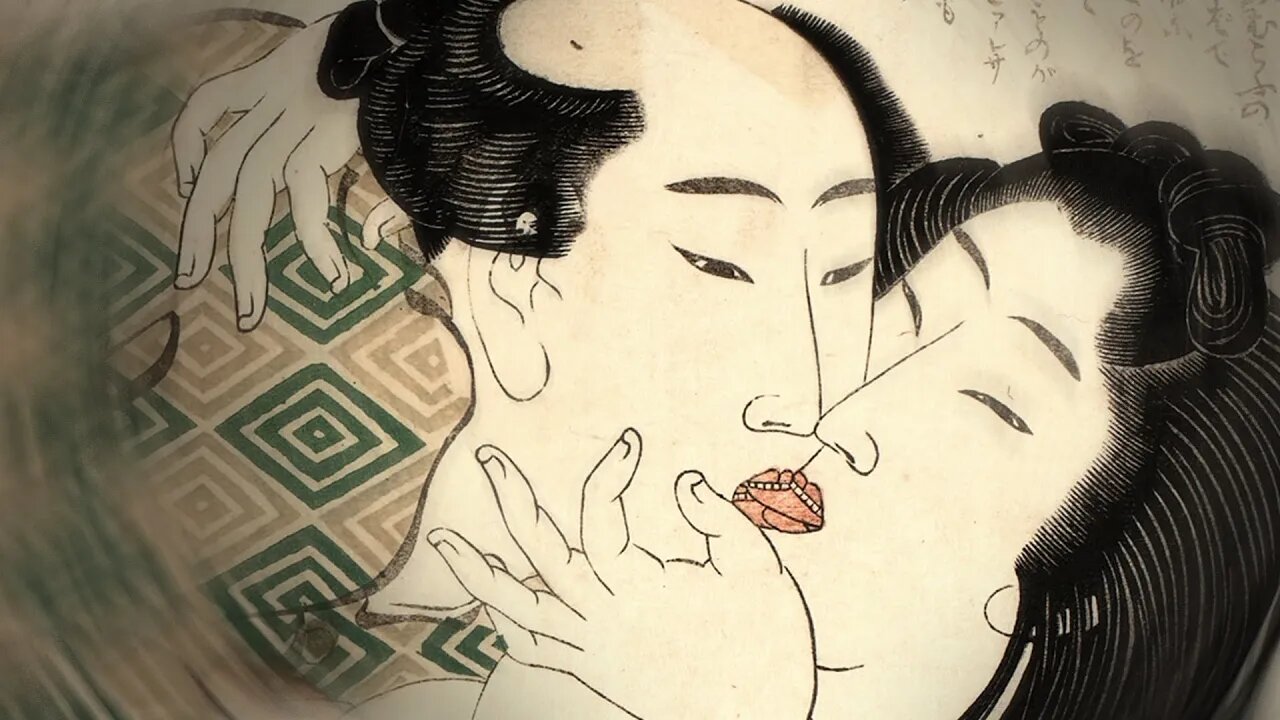Premium Only Content

Love-making, Marriage, and Punishment in Shogun-Japan
Continue your medieval journey with Saladin vs Richard the Lionheart. Install March of Empires for FREE here ✅https://gloftmoe.page.link/ADayInHistory. Thank you to Gameloft for sponsoring the video.
For almost 700 years between the 12th and 19th centuries, Japan was ruled by a Shogun. This was the age of samurai and the formation of the modern nation of Japan. This period also saw the emergence of new ideas about love-making and marriage.
Today, we’ll be looking at love, marriage, divorce, and sexual culture in Shogun-era Japan. If you enjoy videos like this topic, please like and subscribe to the channel for more content like this.
It has sometimes been said that there was no such thing as romance in pre-modern Japan. This isn’t really true - plenty of love stories exist from this period - but it is true that love was not an important part of marriage or sex for most of the Shogun period.
Marriage itself was an ill-defined institution in earlier Japanese history. In the early Shogunate, marriages were not ceremonial events or legal contracts, but merely social agreements between a couple. Even cohabitation for spouses was a relatively new aspect of marriage in the 12th and 13th centuries. Modern ideas of marriage were still forming so it is no surprise that there were many different approaches to it across time and between different classes.
Elites and commoners had very different ideas about it. For the average Japanese person, there wasn’t much hassle involved. Initially, a couple would decide to live together, call themselves married, and maybe have a small celebration, but that would be it. Later on in this period, as laws around inheritance and property tightened up, marriage became an economic question as well. Parents and families might be involved in deciding on a union and, later, contracts started to be drawn up between families to talk through the exchange of property and wealth that came with a marriage. There were some specific limitations and requirements put in place too. For example, in many regions it became illegal to marry someone from a different region - although, given that the average person would never travel beyond their region, this restriction meant little to the average person. Another complication was gyakuenkon, the marriage of a widow to her dead husband’s older brother. This practice was forbidden for samurai, but it was permitted for commoners and in some cases it was even required by law in order to keep the wife in the family.
For elites, the economic and political aspects of marriage were always important. Parents almost always took the lead in arranging marriages for their children. These marriages were political maneuvers that secured or advanced the family’s position. When a couple married, the woman became a part of the man’s family so naturally both sides of the arrangement wanted to be sure that their daughter was going to be taken care of, or that the new daughter-in-law would bring value to her new family.
One exception to this was the practice of yoshi engumi, or adoptive marriages. In these scenarios, a man would marry into the wife’s family. This was rare but could happen if the family lacked a son of their own to inherit their titles and property. Interestingly, while the adoption and the marriage came together, the marriage could later be broken without losing the adoption. In many of these marriages, a prenuptial agreement was drawn up that promised the groom a portion of the family’s assets if the marriage failed. It was up to the bride’s father to decide whether to break the adoption agreement as well, so it was not unheard of for a man to divorce his wife and still end up with her family’s wealth.
All potential marriages among the elites had to be approved by one’s direct feudal lord. It was also prohibited for a family serving one regional lord, called a daimyo, to marry someone whose family served a different daimyo. Potential couples also had to be of a similar social status to avoid upsetting the delicate social order.
#history #shogun #samurai #shogunate #shogunatedocumentary
Scriptwriter: Nathan Hewitt
Video Editor & Motion Graphics: Aditya
Voice-over Artist: Lain Heringman
Music: Motionarray.com & Epidemic music
Copyright © 2021 A Day In History. All rights reserved.
DISCLAIMER: All materials in these videos are used for entertainment purposes and fall within the guidelines of fair use. No copyright infringement intended. If you are, or represent, the copyright owner of materials used in this video, and have an issue with the use of said material, please send an email to adayinhistory2021@gmail.com
-
 17:56
17:56
A Day In History
5 months ago $0.46 earnedThe Slave Trade Mainstream Media Hates To Talk About
3041 -
 32:10
32:10
MYLUNCHBREAK CHANNEL PAGE
1 day agoThe Gate of All Nations
42.9K22 -
 13:07
13:07
Sideserf Cake Studio
6 hours ago $0.09 earnedIS THIS THE MOST REALISTIC SUSHI CAKE EVER MADE?
506 -
 21:08
21:08
Clownfish TV
21 hours agoElon Musk Tells WotC to BURN IN HELL for Erasing Gary Gygax from DnD!
1.26K6 -
 48:22
48:22
PMG
1 hour ago"IRS Whistleblowers Speak Out on Biden Family with Mel K In-Studio"
811 -
 2:59
2:59
BIG NEM
3 hours agoLost in the Wrong Hood: Who Do I Check In With?
421 -
 1:29:32
1:29:32
I_Came_With_Fire_Podcast
14 hours ago"UFOs, Nukes, & Secrecy: Bob Salas on the 1967 Malmstrom Incident, UAPs, & Disclosure"
113K22 -
 1:57:05
1:57:05
The Quartering
7 hours agoElon Musk To BUY MSNBC & Give Joe Rogan A Spot, MrBeast Responds Finally To Allegations & Much More
104K81 -
 3:01:18
3:01:18
EXPBLESS
8 hours agoFirst Time Playing Extraction Shooters | *LIVE* Arena BreakOut | #RumbleTakeOver
87.4K7 -
 1:26:18
1:26:18
LumpyPotatoX2
8 hours agoArena Breakout: Infinite - #RumbleGaming
60.3K1